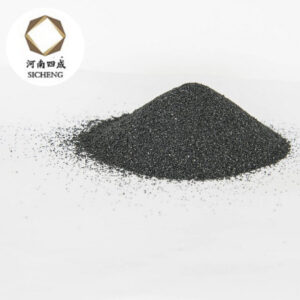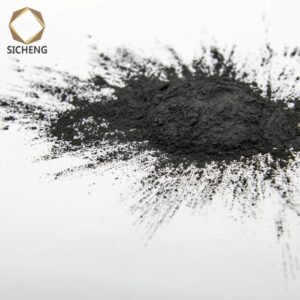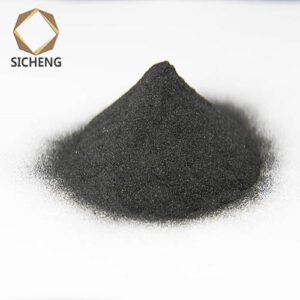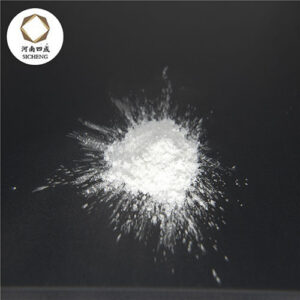Delamination problem of white corundum fine-grained abrasive tools during molding.
White corundum fine-grained products are composed of fine particles, which have larger surfaces and more contact between particles, so the hardness is higher. When the hardness is the same, the porosity is larger. The large contact surface also relatively increases the molding pressure. Coarse particles have larger pores, while fine particles have smaller pores.
It is best to use mixed particle sizes for abrasives for high-density products, so that the ratio of different particles can make products with high packing density and low porosity. Stricter control of the particle size range can be considered in the manufacture of low porosity products.
Reasons for layering of fine-grained products
1. Fast pressurization during molding: the gas in the molding material has not escaped, and the two sides have been compacted and concentrated in the middle to form an air layer. After the external pressure is removed, the gas expands to form a layer in the middle.
2. Elastic aftereffect: When the pressure is high, the blank has a high elastic expansion and contraction effect. The finer the particle size, the closer the contact between the particles, and the smaller the change in stress transmission. However, double-sided pressing is used in the pressing, the middle layer of the product is the weakest, the friction force is different from the upper, middle and lower, and the elasticity is different, so layer cracks are produced under the action of elastic stress.
3. Moisture concentration: Moisture moves downward from the pressurized surface, and double-sided pressure causes moisture concentration in the middle and lower parts, and the strength is reduced, so it also causes layered waste products. Even if there are no cracks after molding, cracks may occur during firing. Therefore, it is more reasonable to turn over the plate to dry when drying.
4. The mold sleeve becomes larger when subjected to high pressure, and shrinks when not pressurized, causing the middle layer to crack and bulge up and down.
Fine-grained products almost inevitably produce layered waste products under high pressure. Therefore, it is especially necessary to find a new molding method to avoid layering.
Avoid measures
Slowly pressurize to allow the gas to fully escape.
Add it to the specified pressure and maintain it for a certain period of time, so that the molded material can be fully moved, the density and strength are uniform, and the elastic stress is eased to eliminate the aftereffect of stress.
1) Vacuum forming is adopted. Or use methods such as vibration and pressure reduction.
2) Casting or plastic molding is adopted.
3) Reduce the pressure and increase the holding time when the semi-dry material is formed.
4) Dry material is used for molding, and adhesive is used as the binder. After combining and sieving, the surface of the particles is covered with a layer of film. In general, the particles do not form agglomeration in contact with each other, but when the pressure is applied, the membranes are in close contact with each other to form agglomeration. Or use a thermoplastic material to form a wrapping film, and then shape it. When forming, hot air is passed through to produce plastic cementation such as paraffin, asphalt, etc. Dry material molding can make the weighing process that is not easy to mechanize adopt fixed volume weighing, dry material is easy to disperse, has good fluidity, and is also beneficial to eliminate imbalance.





